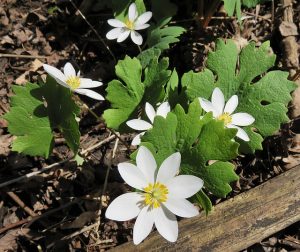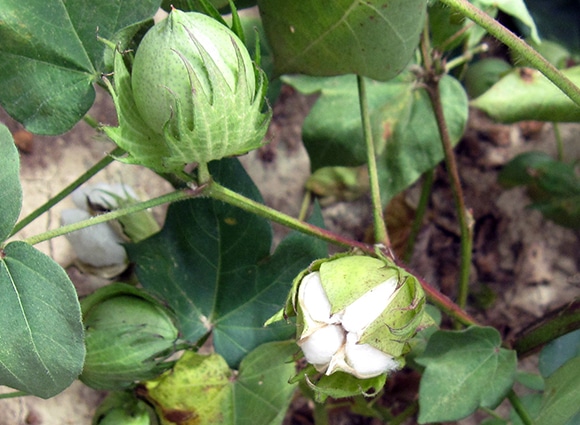Plants are the earliest forms of living organisms on the earth.
There are different types of plants based on their
- Appearance
- Life span
- Habitat and climate adaptations.
- Roots system
- Food habits
- Flower types
- Method of reproduction
They can further be classified based on other factors like their life span, physical appearance, reproduction, presence of flowers, food requirements, etc.
However, the taxonomical classification of plants relies on specific features that run through a set of plants.
This botanical classification is more precise to read for academics, but for knowledge purposes, we can see a lot more of them.
Different types of plants are
Appearance
Plants can be of different appearances, such as small, big, creeping, floating, submerged, etc. They can be classified as such like
- Grasses
- Shrubs/ Bushes
- Creepers and climbers
- Trees
Grasses

Grasses are small, weaker, yet dominant types of plants on the earth. They tend to grow spontaneously on every available soil space on the earth.
They have fibrous roots and emerge from the superficial layers of soil. Their roots do not grow deep into the soil.
Some examples are lawn plants and cereal crops like wheat and paddy.
Shrubs/ Bushes
These are medium-sized plants that can grow up to a few feet. They have a tap root system and branches over a trunk. Their roots can grow up to a few feet deep into the soil.
Examples: Rose, lemon, tomato.
Creepers or climbers:

These are the plants with a flexible trunk that tries to wind themselves around support for growth.
They are some of the robust plants which grow in adverse locations.
Example: tinospora cardifolia, betel.
Trees
These are highly evolved plants and grow to a great height and depth.
They have long lifespan spanning hundreds of years.
Based on age/lifespan
Plants are the longest-living creatures on the earth.
Some of them live for even 1000 to 5000 years or more. But not all plants live the same age.
Some of them even die within months. So plants are differentiated based on their life span as
Ephemerals

These are the plants with a short life span. They live for only a few weeks. They germinate, grow, reproduce, and die within a few weeks. These are present even in deserts.
Ex; Sanguinaria.
Annual plants
- These are the plants that live only for one year or less.

- Most agricultural crop plants come under this category.
Ex; cotton, wheat.
Biennial plants
- These plants survive for two years at most.
- By size, they are also small, like shrubs or bushes, like the annual plants.
Ex: Carrot
Perennial plants.
- These plants grow and also live for many years, even hundreds of years.
- Their actual age is not fixed.
- Some are either cut off or broken due to winds, etc. If not, they live for quite long.
Ex: Neem, banyan, mango, etc.
2. Based on Habitats
The plants can also be classified based on the places where they grow. They are quite interesting, like
a. Mesophytes
These are terrestrial plants that grow in normal land conditions with sufficient water in the soil.

These are the plants that we see around us every day. They can be big trees, shrubs, bushes, plantains, etc.
b. Hydrophytes

- As the name indicates, these plants grow only in water.
- They germinate, grow, and survive in water. They cannot survive in plain soil. Ex: Lotus.
c. Xerophytes

- These are plants that grow in desert areas with deficient water availability and heat temperatures.
- They can survive in drought conditions like the desert. Ex: Cactus.
- They live in dry areas, so-called “xerophytes” as Xero- dry + Phyto- plant. These plants save water for use in drought in leaves or stems.
- So their leaves or stems are succulent, i.e., a bit bulged and soft. When squeezed, you can find a paste-like liquid oozing out.
Further, the leaves have thorns that are meant to prevent animals from grazing on them.
d. Epiphytes
- An epiphyte is a plant that grows on the surface of other plants. Ex: Fern, mosses, etc.
- These plants are not parasites but survive on other big and tall-growing trees.

- The reason is that in dense forests, these plants will be deprived of sunlight on the land due to other big trees shading them.
- So when they grow on other plants, they can overcome this.
- They can get sufficient sunlight for photosynthesis. They thrive on other plants, so epiphytes such as EPI– above (top) PHYTO– plant.
3. Based on the physical size
Have you noticed? Not all plants are of the same size. Some are tiny, while some are gigantic.
Based on this physical size, there are different types of plants.
- Herbs: Small plants with a height of a few centimeters or afoot. Ex; grasses.
- Shrubs: These are quite bigger than herbs, till a meter or more Ex; Basil plant
- Trees: These are large plants. They grow up to a few meters in height and live for hundreds of years or more. Ex: Neem plant.
4. Based on seed types
- The seed is the key part of a plant that gives rise to a new plant.
- It is also the one from which other animals derive nutrition.
- But not all seeds are alike, and the plants can be categorized based on the type of seeds as
A.monocotyledons

- The seeds of these plants appear as a single entity. Ex: Wheat, rice, etc.
- Their seed has a single cotyledon that cannot be broken into equal parts.
- These monocots have adventitious roots with long leaves and parallel veins.
B.dicotyledons.

- Seed can be broken into two equal halves. Ex: Cashew nut, Peanut, etc. Each half is a cotyledon.
- Dicots have a taproot system, and leaf veins show a reticulated arrangement. See more differences here.
5. Based on cell numbers
Plants are made of cells and cell organelles. There are different kinds of Plants based on the cell number and can be classified as
a) Single cellular (unicellular):
Ex; Bacteria, algae.
- These are single-celled organisms classified as plants.
- Bacteria are called plants due to the cell wall on their cell membrane.
- Algae are plants that grow in water or moist places.
Single-celled algae include chlorella and diatoms. Algae have the ability to photosynthesize.
b) Multi-cellular
Ex: Fungi & algae;
- Fungi have many cells linked to one another, but still, each cell survives on its own.
- But unlike algae, they are saprophytes. Some of them are also parasites.
C) Organ-based
- These are plants whose cells form tissue and tissues into organs like leaves, roots, branches, stems, fruit, etc.
- There are large plants and trees in this group.
- We see these plants in daily life around us.
6. Based on Gametes
- Here, plants are classified as gametocytes, and those without gametes are termed Agametocytes.
- The presence of gametes is considered a feature of higher plants in the evolution process.
- The male and female gametes are formed for sexual reproduction.
7. Based on the cover of seeds:
- Here, plants are categorized as Gymnosperms and Angiosperms.
- Most of the plants we see around have a prominent seed coat around the seed.
- Some of them even have a fruit pulp around the seed formed from the flower.
- These plants are termed angiosperms or flowering plants.
- But there are few plants whose seeds are naked and called gymnosperms.
8. Based on food habits
Interestingly, we can classify plants based on their food habits, too.
- As we all know, plants synthesize their own by use of sunlight and fertile soil through the process of photosynthesis and are hence called Autotrophs.
- But some plants are even carnivores. They eat animals like insects.
a. Autotrophs
- These plants create their own food through the use of sunlight.
- They can do so due to their ability to trap the energy of sunlight in their leaves due to the pigment chlorophyll.
- Most plants on Earth are autotrophs.
b. Carnivores
- These plants produce their own food but also eat other insects and animals when they come near.

Ex: Nepenthes, Venus flytrap.
- These plants grow in nitrogen-deficient soil.
- They either have a cavity to trap and close the insect or have a glue-like secretion to trap insects.
C. Parasites:
- These plants depend on other plants for survival.
- Hence, they are called parasites.

Ex: Rafflesia
9. Based on the root type
Also, plants differ based on their root system as
A) Taproot plants
B) Fibrous root plants
Taproot
- These plants have prominent main roots and secondary roots emerging from them.
- Roots penetrate very deep into the soil.
- Due to this, they can stand against strong winds and bear massive trunks and branches.

Ex: Trees like neem and shrubs like cotton.
Fibrous root plants
- These roots are small and bushy.
- They penetrate just the upper layer of soil and can be easily pulled from the soil.
Ex: Wheat and rice plants.
Based on the flower type
- Flowers are the most beautiful parts of a plant.
- They are so good-looking to attract animals and enable cross-pollination.
- They have pollen grains and female gametes within them, and hence, they are the genital organs of the plant.
The flowers of plants vary greatly.
- The taxonomic classification of plants depends to a large extent on the flower structure and arrangement of its petals.
However, flowers are either simple with a single flower or complex with multiple small flowers arranged together, which is called inflorescence.
Based on reproduction
- In general, plants are well-developed for sexual reproduction.
- Hence, there are male and female flowers or plants.
- However, some plants grow by asexual means, such as the banana plant.
Plants provide food, shelter, and medicine, bring rainfall, and reduce pollution. So, we need to conserve their diversity.
References:
what are the real names of it???
Very Nice And Visible Examples; Great!
This is so good,i love it, it gives me a broad knowledge on plants.
Very helpful and well explained thank you
Also an error where “But there are few plants whose seeds are naked and called as angiosperms” should read “But there are few plants whose seeds are naked and called gymnosperms”
Errors here. Neither bacteria or algae are plants. Seriously, get a clue.
@Claude! Then if you have to place them in either plants or animal category which one do you suggest.?
I really love this page, because it gives me more knowledge.and it make me to know more about plants and their functions.